Reviews
William A. Wellman
USA, 1928
Credits
Review by Megan Weireter
Posted on 19 February 2009
Source Grapevine Edition DVD
Categories The Silence After Sound: Hollywood’s Last Silent Movies
From the moody, impressionistic opening scene to the bitterly ironic finale, Beggars of Life creates a world made of part brutal realism and part brutal melodrama—always, it’s the brutality that’s crucial. Based loosely on a popular hardboiled autobiography by Jim Tully about his young life as a hobo, the film seems out to dispel the romanticism of the hobo life, or at least prove that it’s clearly not a life for a woman. More than that, the film dispels any romantic notions about life itself, sneering that freedom is impossible and homecoming is just a dream. Words like “solitary,” “poor,” “nasty,” “brutish,” and “short” kept occurring to me as I watched the various drifters slink around onscreen trailed by endless bad luck.
This was Louise Brooks’ last American film, and it’s her performance that really sells it for me—definitely more so than Wallace Beery, who at the time was a bigger star, but frankly comes off as a bit of a scenery-chewer. But Brooks is an incredible presence. She spends most of the film dressed up as a boy, glowering fearfully at the world from under her cap, letting the power of her performance comes from its subtlety. Her character tries to pass through the world invisibly, but Brooks is far too mesmerizing for that to ever be really possible.
Interestingly, Beggars of Life was also Paramount’s first film with sound. Like The Jazz Singer, there were only a few spoken parts on the soundtrack, and since the soundtrack is lost, the film really just functions now as a silent anyway. But I can’t imagine how sound could have made much of a difference to anyone’s enjoying of this movie, so it seems just as well.
The film begins with a young hobo, Jim, approaching a farmhouse, tempted by the smell of breakfast. Through the screen door he can see the back of a man sitting at the kitchen table. He lets himself in, offering to work for some food, but the man isn’t responsive. Slowly, the hobo circles around and sees that the man has been shot in the temple. For a while, that’s all we see. Then from the loft above, a lovely girl named Nancy in boy’s clothes emerges from the shadows and stares down at him in terror.
The camera lingers on this tableau for a while, and it’s incredibly effective—from here, the movie can really go anywhere. Finally, though, Nancy comes down the stairs and explains that the man was her adoptive father, and that she shot him in self-defense when he tried to rape her. The flashback sequence of the near-rape and murder is superimposed over the image of Nancy sadly telling the story. Jim suggests that she come with him, and he’ll show her where to hop a train going east to safety before the law comes for her.
For a long time, we follow Jim and Nancy as they walk alone, small under the empty sky, following the railroad tracks. The first half of the movie is really only about the two of them and their wanderings, but there’s not any trite feeling of freedom on the open road—what stands out is their abject loneliness, a sense that the home they’re both seeking is so far away as to be unattainable. In everything he does, Jim tries to remain optimistic, but we don’t trust him on this, and neither does Nancy, even though he can occasionally convince her to smile. These are the best scenes in the film, though—their relationship begins to sparkle simply because they seem to be the only two people on the whole planet.
The tone is set early on when Nancy tries to jump onto a freight train but falls off, bouncing back down the embankment. I’m sure it was more common than not to fall trying to do this, but failure is so rarely featured in this kind of movie that it was heartbreaking to see it. The next time, Jim helps her on, having decided that she should come with him to Alberta, and they manage to hitch a ride. It’s only about five minutes, though, before a railman kicks them off again—so off they jump, poor Nancy once again rolling down the embankment behind Jim. Louise Brooks actually did her own stunts (much to her consternation), so as she gets up and walks off with Jim, her limp is probably real.
They walk until dark, never seeing anyone else, eventually making a hole in a haystack to sleep in. Jim has so far been a decent guy, but it’s been hard to know what his intentions really are. He continues to be decent here—Nancy lies next to him in the small, claustrophobic space, tense and fearful and unsure that men can ever be trusted, and when he bends his legs on top of hers she fears the worst. But he’s only trying to keep her warm. “Thanks,” says Nancy sheepishly. They whisper their dreams of home to each other, their faces shining in the dark of the haystack as they finally fall asleep.
On they continue the next day. A Wanted poster, which Jim grabs before Nancy can see it, makes it clear that the cops are in fact looking for her. That night they find a crowd of maybe 20 hobos sharing some kind of a stew around a fire. At this point, the really big shift in tone begins—whereas there was a forlorn, fragile beauty to the earlier scenes of Jim and Nancy together, things here start to get distinctly broad and sensational.
Once the hobos discover that Nancy is a woman (because, really, she’s not a very convincing boy), it sets off a lusty mania, as if these people haven’t seen a woman in their lives. This is where Wallace Beery’s character, Oklahoma Red, is introduced - though Berry has top billing, he’s not seen until the film’s midpoint - and his own comic overacting seems to inspire the rest of the hobos to similar ludicrous heights. That’s not too surprising, considering that most of the hobo extras were actual hobos, and not actors, so surely they took Beery’s cues to heart.
Before the mob can descend on Nancy, though, the cops descend upon the hobos, looking for the murderer, and the whole hobo mob runs off to hop yet another train. But they haven’t forgotten the girl in their midst. An unnecessarily long scene on a boxcar has the hobos acting out a mock trial to see who gets to stake their claim to Nancy. The hobos all make adorable malapropisms like “persecutin’ attorney” and “dispense with justice,” hardy har har har. The scene just holds up the pacing and doesn’t work at all. I imagine the filmmakers felt they needed some comic relief, but in the context of the film - remember they are on the run from cops, trying to decide who gets to rape Nancy - the phony setup, with its puns and aw-shucks-I-shore-am-unedumicated jokes, falls completely flat. Besides, Nancy easily outwits them, managing to set off a gigantic fight by choosing a man named Snake as paramour over Red. Fists fly, Jim grabs a gun, and the scene drags on.
When the scene is finally over, we get back to the business of running from the police en masse. The hobos discover that the cops are actually on the train, and Oklahoma Red climbs on top of the train and manages to unhinge their boxcar in one of the most impressive action sequences I’ve ever seen in a silent. The hoboes scatter. Jim and Nancy make their way along with two of them, one injured in the crash, to an abandoned shack. The injured hobo quickly dies of his wounds, leaving our heroes to wonder what on earth to do next. Luckily, Oklahoma Red shows up with a stolen car and a set of women’s clothes for Nancy—the cops are all looking for a girl dressed up as a boy, so she’s actually better off in a dress. He offers to drive Nancy over the Canadian border to safety, but she absolutely refuses to go without Jim, saying she’d rather be caught and hanged than do so.
Oklahoma Red sits down in surprise. “I’ve heard about it, but I’ve never seen it before,” he says—“It must be love!” And now all of a sudden Red, who, remember, has spent all his screen time trying to force himself on Nancy and consolidate his power over the hoboes, turns out to just be a big softie. He lets Jim and Nancy take the car themselves, wishing them the best. And off they go together, two blips of hope for us all in an otherwise hostile, indifferent world.
The film could have ended here, which would have at least been marginally uplifting, but what comes next transforms Red into not just a softie, but a saint. He and another hobo concoct a plan to fake Nancy’s death and keep the police off her trail forever. It involves dressing up the dead hobo in her boy’s clothes and causing a train derailment and fire. Red plays the role of Jim and plans to jump free of the train before it goes over the rails. Everything goes according to plan, except that Red ends up taking a cop’s bullet and rolling into a ravine. As he dies to save them, Nancy and Jim drive solemnly off into the sunset, talking about how Red is the kind of guy who would cut your heart out for a nickel.
The ending, though contrived and melodramatic, is exactly right for the darkness of the film. Without some kind of twist, the ending wouldn’t have worked—in the world of Beggars of Life, there can be no happy ending without a balance of misery elsewhere. Maybe Jim and Nancy will go on to lead happy lives, but their experiences on the road have tainted them—you can bet that they will end up as the people who throw hoboes out the backs of their trucks one day, rendering Red’s death that much more meaningless. But in Beggars of Life, meaninglessness is the fate of everyone.
More The Silence After Sound: Hollywood’s Last Silent Movies
-
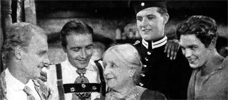
Four Sons
1928 -
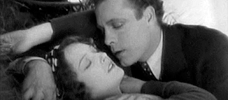
The Crowd
1928 -

A Girl in Every Port
1928 -
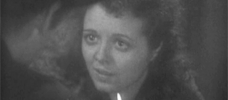
Street Angel
1928 -

The Patsy
1928 -
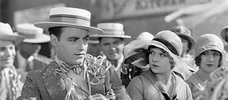
Lonesome
1928 -

Our Dancing Daughters
1928 -
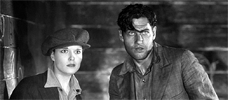
Beggars of Life
1928 -
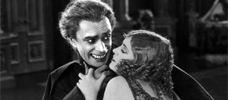
The Man Who Laughs
1928 -

The Docks of New York
1928 -
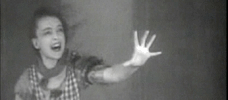
The Wind
1928 -
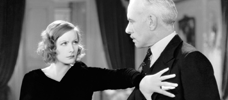
A Woman of Affairs
1928 -
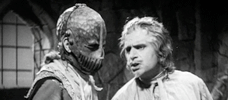
Iron Mask
1929 -
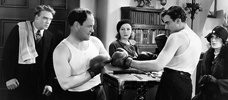
The Single Standard
1929 -
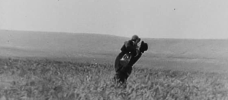
City Girl
1930 -
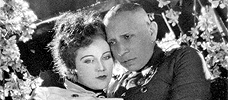
The Wedding March
1928
We don’t do comments anymore, but you may contact us here or find us on Twitter or Facebook.



